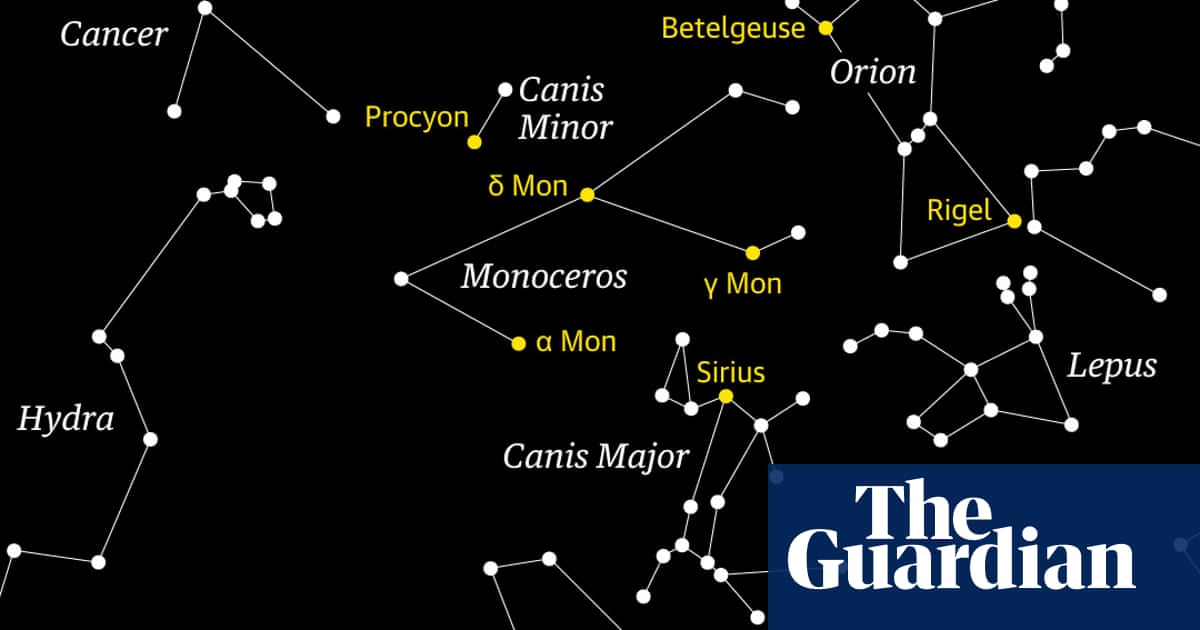This week, we track down a faint and often overlooked constellation. Monoceros, the unicorn, spans the celestial equator, which makes it visible from most parts of the world. It often goes unnoticed, however, because it is surrounded by much more prominent constellations such as Orion, Canis Major, Canis Minor, and Gemini.
The chart shows the view looking south-south-east from London at 20.00 GMT on 17 February, although the view will remain essentially the same all week. Because none of the stars in Monoceros will stand out, the easiest way to zero in on the unicorn is by identifying the brightest stars in the surrounding constellations. First, find Sirius in Canis Major. This is the brightest star in the night sky. From there proceed anti-clockwise to Rigel in Orion, then Betelgeuse. Hop across to Procyon in Canis Minor and you will have virtually encircled Monoceros.
To properly see the stars in Monoceros will require a dark sky, well away from street lights. It is so faint, that it was not recognised by the astronomers of classical antiquity. Instead, it was introduced in 1612 by the astronomer Petrus Plancius, although some texts suggest that it could date back to the mid-16th century.
Article by:Source: Stuart Clark












